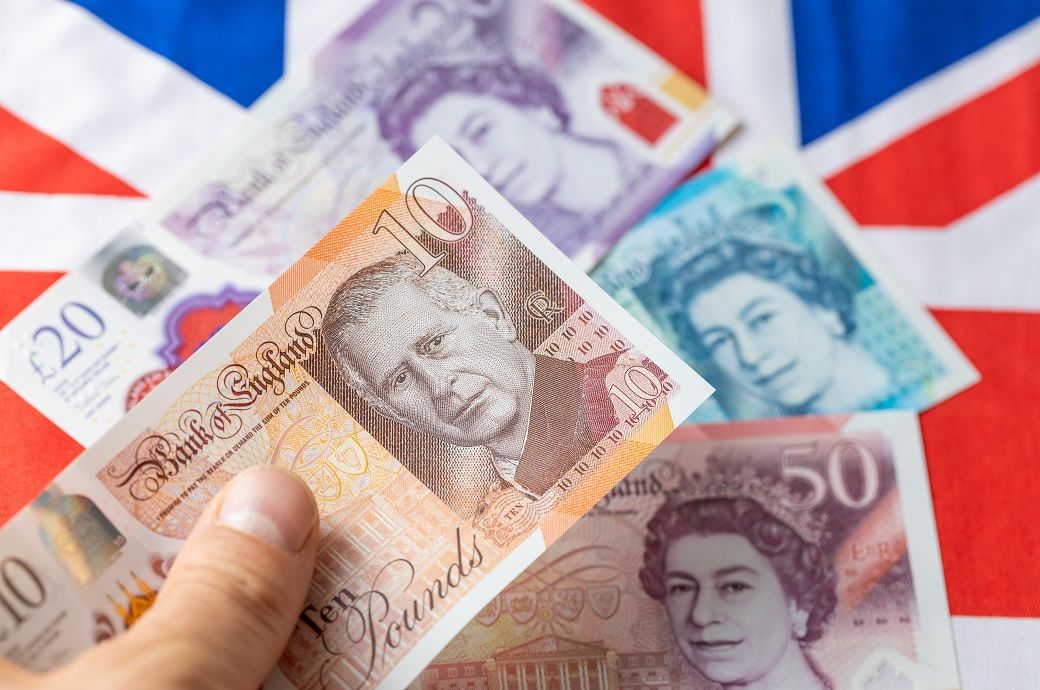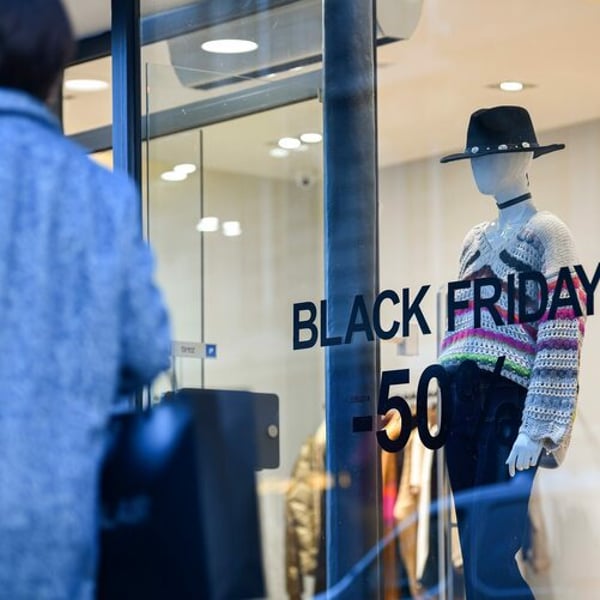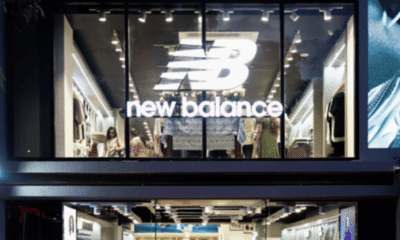Fashion
Debenhams Group results show EBITDA up, GMV down, explores sale of underperforming PLT

Published
August 26, 2025
Debenhams Group (which used to be Boohoo Group) issued its annual results for the year to the end of February on Tuesday afternoon and said adjusted EBITDA rose 3% to £41.6 million.
There were plenty of negative figures in the report too, but some things are clear – this is still a huge operation selling a massive amount of fashion and other products. And certain parts of the business are performing much better than others. The Debenhams brand in particular is a standout performer. But PrettyLittleThing (PLT), which was recently relaunched, clearly isn’t. It had a negative impact on the results and the company is exploring its sale.
The shares spiked upwards by about 3% on the news, which is understandable given the negative impact PLT has had on the group’s performance.
CEO Dan Finely said: “We have a clear plan to transform the business and a route map to generating sustainable profit growth. We are focused on delivering on the huge opportunity ahead for the Debenhams brand. Work is progressing to reposition and right-size the Youth Brands.
“This will be a multi-year turnaround. As part of our ongoing business review, we are exploring a potential sale of PLT. We are also assessing long-term options for our US and Burnley distribution sites to enhance efficiency and ensure alignment with our stock-lite strategy.”
He added that “all our brands are now trading profitably in terms of adjusted EBITDA”.
The numbers
Big news indeed, although at this stage it’s not certain that PLT will be sold. So let’s look at the figures for the group with and without PLT being included. In what was clearly a year of transition as the company changed its leadership and dived deeper into a marketplace model, GMV pre-returns and excluding PLT fell 2% to just under £1.607 billion and including PLT GMV fell 10% to almost £2.322 billion.
The Youth Brands’ GMV fell 19% to £795.6 million without PLT and fell an even wider 22% to £1.51 billion with PLT included. Meanwhile Karen Millen fell 3% to £157.1 million. But the Debenhams brand was up an impressive 34% at £654 million.
GMV for the company post-returns was up 1% with PLT excluded at just over £1.137 billion but was down 8% with it included at £1.639 billion.
Total revenue excluding PLT fell 12% to £790.3 million and with it included fell 17% to just under £1.218 billion.
The gross margin excluding PLT fell to 52.6% from 53.1% and including it fell to 50.7% from 51.8%.
That’s a lot of numbers to digest but it’s very clear the PLT is an issue.

Profit… and loss
Profit-wise, the company highlighted the adjusted EBITDA figure mentioned at the start, but some of the other figures in the report were less impressive with adjusted EBIT a loss of £21 million. That said, this was an improvement on the £30.7 million loss on that basis a year earlier. The adjusted loss after tax also narrowed by 12% to £43.4 million.
Dan Finley, who took the helm last November, said that when he stepped up from running the Debenhams brand, “the board recognised the need for change following a long period of sustained and unacceptable underperformance. My immediate focus has been on stabilising the business and positioning it to take advantage of the significant opportunities ahead”.
Of that happily positive adjusted EBITDA figure, he added: “On appointment, [such an achievement] seemed improbable, but we quickly came up with a plan, confirmed our position with the market and executed it. This has only been possible due to the aggressive actions subsequently taken, including £50 million of annualised headcount savings.”
Debenhams brand leading the way
Finley called out “the standout performance of the Debenhams brand” as the year’s highlight and the brand’s adjusted EBITDA of £25 million (up £14 million year on year).
And he explained that the Debenhams “capital-lite, stock-lite, cost-lite, cash-generative marketplace model sits at the heart of our new strategy. The multi-year turnaround of Debenhams is the blueprint for the turnaround of the wider group”.
Other achievements include the group having “significantly reduced the capital intensity of the business. We have faced into legacy stock issues and reduced our stock holding by more than 50%. We have stopped unnecessary capital expenditure and reduced capex by more than 50%. Further reductions will be delivered this financial year”.
Improvements in its debt position have also been key and Finley explained that while “the business has been through a very challenging period which is reflected in these results. I want to assure shareholders that the business is taking the necessary actions, quickly and decisively, to address the challenges that we face. No stone will be left unturned”.
Copyright © 2025 FashionNetwork.com All rights reserved.
Fashion
UK budget mildly deflationary; debt to climb past 106%: Fitch

The rating agency said the government’s latest fiscal package is broadly in line with projections made when it affirmed the UK at ‘AA-’/Stable in August but said that the path to consolidation is becoming more challenging.
Fitch Ratings has deemed the budget marginally deflationary, sees debt rising above 106 per cent of GDP by 2027.
The agency said the UK budget broadly aligns with its August deficit projections but signals of rising implementation risks due to back-loaded tax measures and tight spending plans.
New taxes total £26 billion (~$34.37 billion) by FY29, while social spending rises further.
Fitch said the budget’s new tax measures represent £26 billion (~$34.37 billion), or 0.7 per cent of GDP, by fiscal 2029 (FY29), with threshold freezes contributing £8 billion (~$10.57 billion). New Office for Budget Responsibility (OBR) data show general government net borrowing projections 0.2 percentage points (pp) higher on average in 2026–2028 than in March, before falling 0.2 points in 2029, Fitch Ratings said in a release.
Fiscal data since summer remain broadly in line with Fitch’s forecast for the general government deficit to narrow by 0.6 pp in 2025 to 5.3 per cent of GDP and then to 4.4 per cent in 2027, around 0.7 points slower than the government’s new targets.
The agency highlighted material uncertainty around implementation, particularly given the challenging expenditure consolidation outlined in June’s Spending Review, which the budget largely preserves. Real-terms public-sector current spending growth has been tightened further in FY29 to zero, averaging 1.2 per cent in FY26–FY28 compared with 3.4 per cent in FY24–FY25.
Fitch noted that many tax measures are highly back-loaded, coming into effect closer to mid-2029, the latest possible timing of the next general election. A large portion of the tax plan also consists of numerous smaller measures, making the overall impact less transparent than the broader income tax rise the government signalled before the budget. Options to raise further revenue are politically constrained by 2024 election pledges not to increase personal income tax, VAT or National Insurance.
Still, Fitch said Chancellor Rachel Reeves is demonstrating firmer commitment to the fiscal rule than recent predecessors. Last year’s decision to shorten the rolling forecast horizon from five to three years from 2026 has reduced the scope to delay real fiscal adjustment. Aligning fiscal plans more closely with three-year spending reviews also makes it harder to rely on unrealistic spending cuts to fill fiscal gaps.
Budget headroom has increased from £12 billion to £22 billion, around 0.6 per cent of GDP, but Fitch said this remains limited and constrains efforts to improve policy predictability.
Revenue projections have been reshaped by a £16 billion downgrade in expected tax receipts due to lower OBR productivity assumptions, reducing average GDP growth in 2026–2029 by 0.3 pp to 1.5 per cent. Upward revisions to inflation and wage growth more than offset this decline. The OBR’s updated medium-term GDP growth outlook is now closer to Fitch’s trend estimate of 1.4 per cent, of which total factor productivity contributes only 0.3 points.
Although sustained high nominal gilt yields represent a significant fiscal risk, the UK’s long average debt maturity of 13.7 years helps contain projected debt-interest requirements, which Fitch expects to rise modestly to 7.4 per cent of revenue in 2027 from 7 per cent in 2024.
Fitch projects modest GDP outperformance in the near term compared with its August forecast of 1.2 per cent for 2025, although a weakening labour market poses a small downside risk to its 1.2 per cent projection for 2026. The agency judges the budget as marginally deflationary and expects inflation to fall to 2.4 per cent by end-2026.
Fibre2Fashion News Desk (HU)
Fashion
New Balance launches three new stores in Bengaluru, India

Published
December 1, 2025
Global athletic brand New Balance has expanded its brick-and-mortar footprint in the Bengaluru metro area and opened its doors at three new locations: Indiranagar, HSR, and Forum South Bengaluru.
“We are excited to deepen our presence in Bengaluru- with our stores at Brigade Road, Indiranagar, Forum Mall, and HSR, anchoring us in a city that embodies innovation, culture, and an unwavering passion for fitness,” said New Balance India’s country manager Radeshwer Davar in a press release. “This weekend’s in-store experience and community run allowed us to bring New Balance’s philosophy to life while reinforcing our commitment to building inclusive fitness communities and we want to thank the people of Bengaluru who turned up in great spirit.”
Highlighting its long-term commitment to the Indian market, the new outlets are designed to offer an immersive retail environment and mix craftsmanship with technology. New Balance held an exclusive in-store event at its Indiranagar store, featuring an interactive brand showcase of both footwear and apparel. The New Balance Run Club also put on a community run which saw participation from over 200 individuals.
“Over the past year, we’ve more than doubled our retail footprint in India, and these three new stores are a strong testament to that momentum,” said Davar. “For us, it’s not just about expanding retail locations- it’s about creating experiential centres that bring innovation, performance, and style together under one roof.”
Headquartered in Boston, US, New Balance has been independent since 1906 and employs 10,000 associates worldwide. The business reported a global sales total of 7.8 billion dollars in 2024 and counts five athletic footwear factories in New England, US and one in Flimby, UK.
Copyright © 2025 FashionNetwork.com All rights reserved.
Fashion
U.S. Black Friday online sales hit record $11.8 billion, Adobe reports

By
Reuters
Published
December 1, 2025
American shoppers spent a record $11.8 billion online on Black Friday, up 9.1% from last year, final data from Adobe Analytics showed.
Adobe Analytics, which tracks over 1 trillion U.S. retail site visits, expects shoppers to spend $5.5 billion on Saturday and $5.9 billion on Sunday, up 3.8% and 5.4% from a year earlier respectively.
Separately, software firm Salesforce reported that American consumers had spent $18 billion on Black Friday purchases, up 3% from a year ago, with luxury apparel and accessories among the most popular categories.
Although U.S. consumers spent more this Black Friday compared to last year, price increases hampered online demand, according to Salesforce, with shoppers purchasing fewer items at checkout compared to last year.
At physical stores, the bargain-chasing was relatively subdued on post-Thanksgiving morning, with some shoppers saying they feared overspending amid persistent inflation, trade policy-driven uncertainty, and a soft labor market.
Cyber Monday, traditionally a big day for online deals, is expected to be the season’s biggest online shopping day again, Adobe projects, driving $14.2 billion in spending, up 6.3% from last year.
© Thomson Reuters 2025 All rights reserved.
-

 Sports1 week ago
Sports1 week agoWATCH: Ronaldo scores spectacular bicycle kick
-

 Entertainment1 week ago
Entertainment1 week agoWelcome to Derry’ episode 5 delivers shocking twist
-

 Politics1 week ago
Politics1 week agoWashington and Kyiv Stress Any Peace Deal Must Fully Respect Ukraine’s Sovereignty
-

 Business1 week ago
Business1 week agoKey economic data and trends that will shape Rachel Reeves’ Budget
-

 Politics1 week ago
Politics1 week ago53,000 Sikhs vote in Ottawa Khalistan Referendum amid Carney-Modi trade talks scrutiny
-

 Tech6 days ago
Tech6 days agoWake Up—the Best Black Friday Mattress Sales Are Here
-

 Fashion1 week ago
Fashion1 week agoCanada’s Lululemon unveils team Canada kit for Milano Cortina 2026
-

 Tech1 day ago
Tech1 day agoGet Your Steps In From Your Home Office With This Walking Pad—On Sale This Week


















